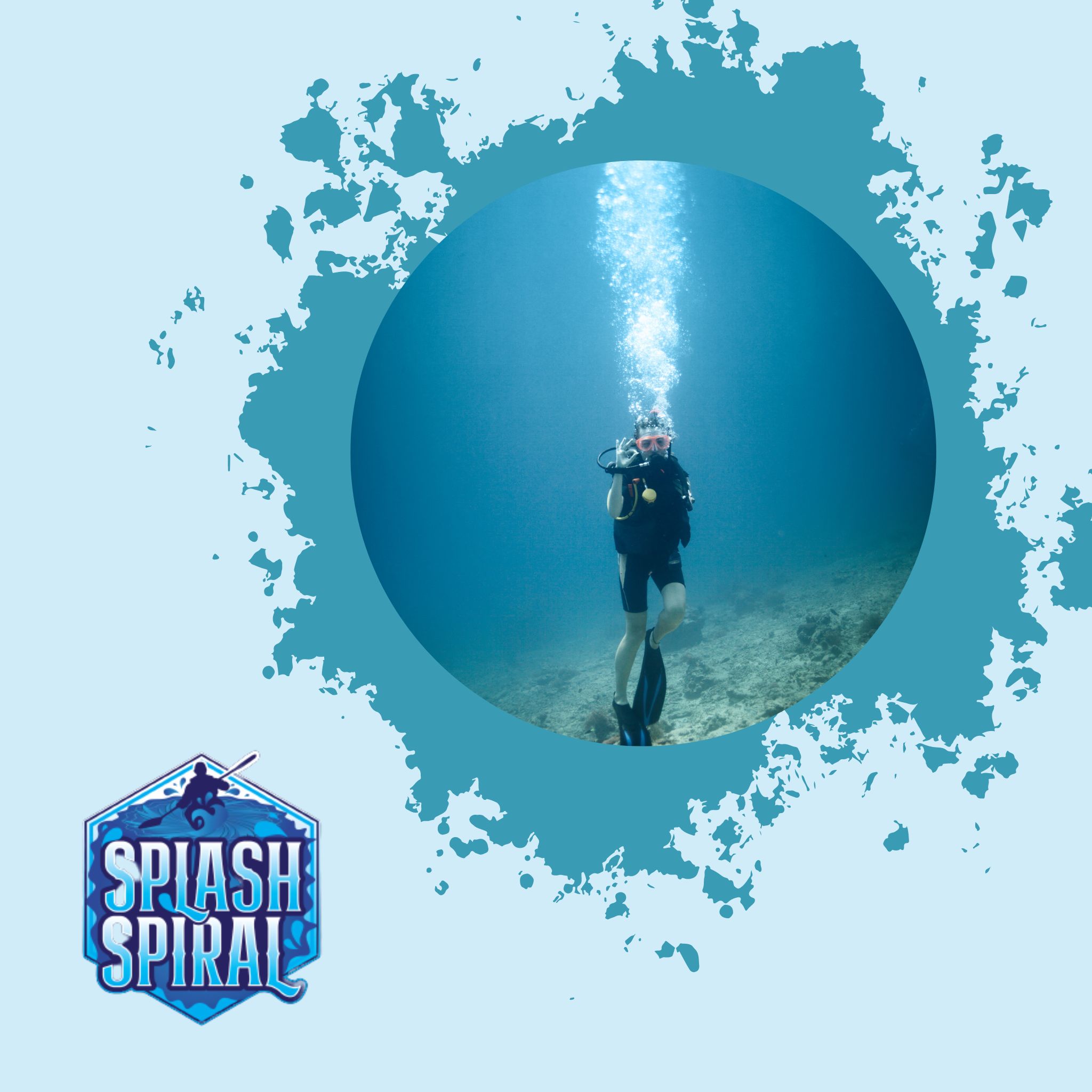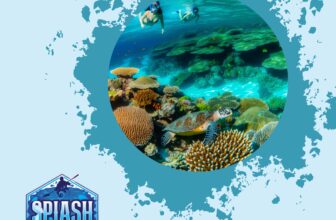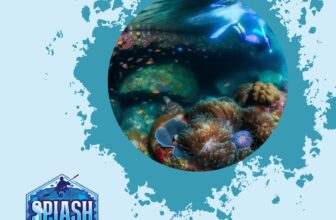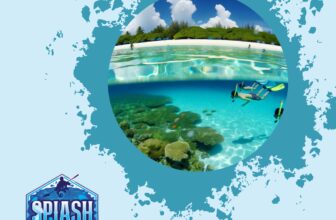
Scuba diving is a recreational activity enjoyed by many people around the world. It involves exploring the underwater world with specialized equipment, allowing you to breathe underwater and see incredible marine life up close.
What makes scuba diving so unique is that it offers a completely different perspective from what we experience on land. But scuba diving isn’t just a fun hobby; it can also be physically demanding.
Divers must navigate through the water using their own strength, while also managing their air supply, buoyancy, and other factors that affect their safety and comfort. The physical demands of scuba diving can make it an excellent form of exercise, burning calories and working various muscle groups throughout the body.
Whether you’re an experienced diver or someone who’s never tried it before, scuba diving is an exciting way to stay active and explore the beauty of our oceans. But before we dive into how many calories you can burn while scuba diving, let’s first explore more about this fascinating recreational activity.
The Calorie Burn of Scuba Diving: Explained
Scuba diving is a unique and exciting physical activity that combines the thrill of exploring underwater environments with the physical demands of carrying heavy equipment and navigating through water. The question on many people’s minds is, how many calories does scuba diving burn?
The calculation of calorie burn during scuba diving is based on a number of factors, including body weight, level of exertion, and the duration of the dive. The more weight you carry, the more energy you use to move through water.
Similarly, the harder you exert yourself during a dive (such as when swimming against currents or carrying heavy equipment), the more calories you will burn. The length of your dive will also impact calorie burn – longer dives require more energy to sustain your body’s functions over time.
On average, an hour-long scuba dive can burn anywhere from 300-500 calories depending on these factors. However, this number can vary greatly from person to person and from one dive to another based on individual exertion levels and environmental conditions underwater.
Factors Affecting Calorie Burn During Scuba Diving
As previously mentioned, there are several factors that can affect how many calories are burned during a scuba dive. These include: 1) Water temperature – Your body burns more calories in colder water as it works harder to stay warm.
2) Depth – The deeper you go underwater, the more pressure your body experiences which can increase calorie burn. 3) Currents – Swimming against strong currents requires more effort and therefore burns more calories.
4) Type of gear carried – Carrying heavier or bulkier gear requires additional energy expenditure. 5) Skill level – More experienced divers may be able to conserve energy better than beginners due to improved techniques and buoyancy control.
Understanding these factors can help divers prepare for their dives and maximize their calorie burn. By selecting dive sites with stronger currents or carrying additional gear for a more challenging workout, divers can increase the intensity of their dives and boost the number of calories burned.
Physical Benefits of Scuba Diving
Scuba diving is not only a fun and adventurous sport, but it also offers a range of physical benefits that can improve your overall health and fitness. One of the most significant benefits is cardiovascular exercise.
When scuba diving, you are constantly moving, which helps to increase your heart rate and improve circulation throughout your body. This type of exercise can help reduce the risk of heart disease, lower blood pressure, and improve overall cardiovascular health.
In addition to cardiovascular exercise, scuba diving also provides an excellent opportunity for muscle strengthening and toning. Swimming against the current or carrying heavy equipment in water provides resistance that can help build muscle strength in your arms, legs, core, and back muscles.
Stronger muscles not only give you better endurance while diving but also help with other physical activities outside the water. Scuba diving can also help improve flexibility and range of motion as it requires a full range of motion through every joint in your body to move around underwater properly.
The pressure from being underwater ensures that each movement is controlled and gentle on the joints while being highly effective for increasing flexibility over time. Overall whether you’re looking to get fit or maintain your current level of fitness as part of an already active lifestyle – scuba diving provides a great way to keep healthy while engaging in an enjoyable activity at the same time!
Preparing for a Dive to Maximize Calorie Burn
Scuba diving is a physically demanding activity that can definitely help you burn some calories. However, there are certain steps you can take to ensure that your dives are even more effective at burning fat and building muscle. Before you hit the water, it’s important to consider your nutrition, warm-up routine, and dive site selection.
Proper Nutrition and Hydration
Fueling your body with the right nutrients before a dive is key in maximizing calorie burn. Make sure to eat a balanced meal with plenty of carbohydrates, protein, and healthy fats at least an hour before diving. This will provide the energy needed for physical exertion during the dive while also maintaining blood sugar levels.
Hydration is also crucial when it comes to scuba diving. Drinking enough water helps regulate body temperature and enhance performance underwater.
Dehydration can lead to exhaustion and disorientation during a dive, which can be dangerous. Aim to drink at least 16 ounces of water an hour before diving and continue drinking throughout the day.
Warm-Up Exercises Before the Dive
Warming up before any physical activity helps prevent injury while increasing performance. This is especially important prior to scuba diving since it requires physical exertion in a unique environment which can put additional stress on specific muscle groups.
Simple exercises such as jumping jacks or lunges are great ways to warm up before hitting the water. Stretching major muscles such as calves, thighs, hips, shoulders, necks will help improve flexibility thereby reducing chances of cramps or strains during the dive.
Choosing A Challenging Dive Site
The type of dive site you choose has an impact on how many calories you end up burning during your scuba excursion. The more challenging dives demand greater physical effort by using more air from tanks while swimming against currents, climbing, or descending steep walls.
The best way to optimize your scuba diving experience for calorie burn is to choose a dive site that requires effort and presents you with challenges. Some of the most rewarding sites are those with strong currents or wrecks requiring some level of physical exertion such as the USS Vandenberg in Key West, Florida or the Yongala in Queensland Australia.
Tips for staying safe while burning calories underwater
Whether you’re a beginner or an experienced diver, safety should always be your top priority. Here are some tips on how to stay safe while burning calories underwater:
Proper equipment maintenance and use
Before diving, it’s important to check your equipment thoroughly. Make sure that your mask and regulator are properly fitted and in good condition. Check your BCD (buoyancy control device) for leaks or tears and make sure that it is functioning correctly.
Your fins should fit snugly but not be too tight as this may cause cramping in the feet. Once you’ve checked your equipment, make sure you know how to use it correctly.
Familiarize yourself with the controls on your dive computer and ensure that you understand how to read it properly. Always follow the manufacturer’s instructions when using any diving gear.
Monitoring air supply and depth
Maintaining a good air supply is essential for safe scuba diving. Make sure that your tank is filled with enough air before each dive and check your gauge regularly throughout the dive. Never hold your breath while underwater as this can lead to serious lung injuries.
Monitoring depth is also important for safety reasons. Before each dive, establish a maximum depth limit based on training level, experience, physical fitness, and other factors such as water temperature or currents.
Buddy system and emergency procedures
Scuba diving should always be done with a buddy for safety reasons. The buddy system allows divers to look out for one another while exploring the underwater world together.
Before each dive, discuss communication methods with your buddy (e.g., hand signals) so that you can communicate effectively while underwater. In addition, familiarize yourself with emergency procedures before each dive so that you know what to do if something goes wrong (e.g., loss of air supply, entanglement, or a medical emergency).
Practice these safety procedures with your buddy regularly to ensure that you both know what to do in case of an emergency. By following these tips, you can stay safe while enjoying the physical benefits of scuba diving.
Conclusion
As we’ve explored in this article, scuba diving is not only a fun recreational activity but also provides many physical health benefits. The total calorie burn you’ll experience during a dive depends on several factors such as your weight, depth of the dive, and water temperature. On average, divers can expect to burn around 400-700 calories per hour of diving.
This calorie burn helps to improve cardiovascular health and strengthen muscles throughout your body. In addition to burning calories, scuba diving also increases flexibility and range of motion.
The buoyancy of the water means that your muscles experience less impact than they do on land-based activities such as running or weightlifting. Additionally, the underwater environment provides natural resistance training for your whole body. Encouragement to try out this fun activity that also helps keep you fit!
Not only is scuba diving an excellent way to get some exercise while enjoying beautiful underwater scenery, but it’s also a great way to meet new people who share similar interests. Diving clubs and groups offer opportunities for community building and travel adventures all over the world.
If you’re new to scuba diving or looking for ways to improve your fitness level while doing something exciting and unique, then give scuba diving a try! With proper training and certification from an accredited organization like PADI (Professional Association of Diving Instructors), anyone can become a certified diver and explore the wonders beneath the waves.
So what are you waiting for? Get out there and start exploring!







